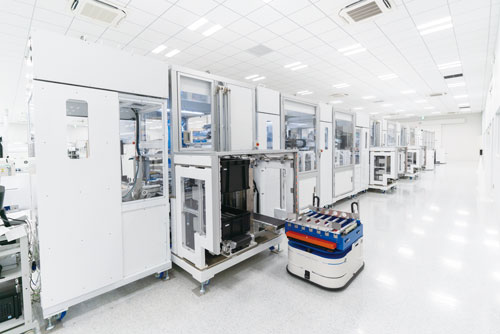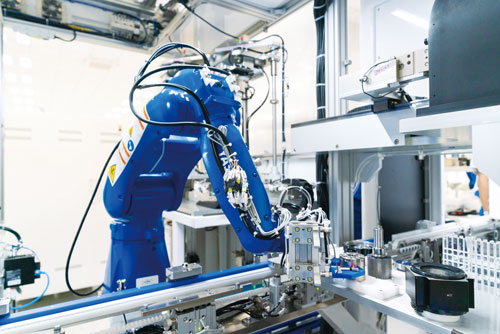YASKAWA Solution Factory
Vol.83 No.1 Technical Progress in 2018
Yaskawa Solution Factory

Yaskawa Solution Factory
Outline
The “Yaskawa Solution Factory” (hereinafter called the “Solution Factory”) that was prepared at the Iruma Plant (Iruma City, Saitama Prefecture) was completed in July 2018 and began full-fledged operations in December. The concept of the plant is “a next-generation production plant that will change manufacturing and business.” Dramatic productivity enhancement was achieved at the plant. For example, in the production of Σ-7 Series AC servo drives, the speed and efficiency are three times greater than that of conventional production and the lead time has been shortened to 1/6 the previous time.
It is possible to say that these advances were only achieved because of the automation techniques developed by the company over more than half a century and because the i3-Mechatronics (i cube mechatronics) solution concept Yaskawa put forward in 2017 was put into practice. The following describes each initiative at the Solution Factory that has embodied this concept.
Total automated production, and logistics without human labor
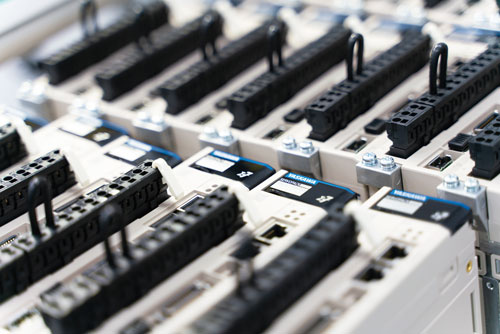
The Σ-7 Series AC servo drives produced
First of all, the following is an explanation of the thorough implementation of automation. Yaskawa has long been offering the automation of each process with motion control techniques and robots as a particular field of expertise for the company. However, the key point for even further automation was to go beyond the automation of a single process to “connect” processes with other processes. In addition to connecting each process physically, it is also essential to connect them with data.
If the manufacturing processes are given in order, then first the parts necessary are taken out of the warehouse based on the requests from the plant side. The parts are carried from the building next to the plant via a conveyor and a vertical conveying equipment and then they are delivered to the plant on the first floor (servo motor production line) or second floor (servo amplifier production line).
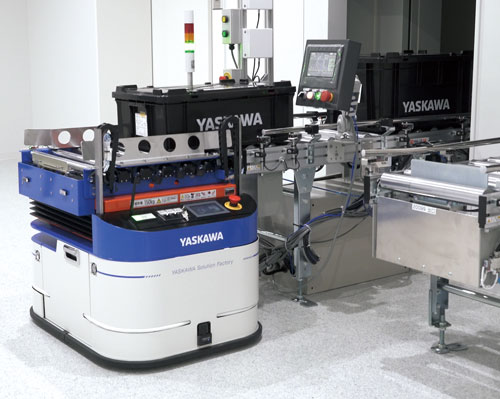
Parts are carried to the assembly processes on AGV
The parts go onto an automatic guided vehicle (AGV) and are supplied to the production line automatically. Each assembly process has a standardized “next-generation assembly station” and the conveying equipment and robots operate cooperatively within those stations to perform the assembly automatically. The majority of the logistics within the plant is conducted using AGV and conveyors in a system where human labor is not necessary.
Visualize and Utilize data
The following explains the next key points, which are “visualization” and data utilization. The other pillar supporting the realization of thorough automation is the connection of the production control data from the order receipt, through the manufacturing and up to the shipment. The manufacturing site is connected with data and there is constant monitoring of the situation of the equipment and the logistics. There is centralized monitoring of the operation situation in the plant from the integrated command center on the second floor of the plant. This monitoring makes it possible to respond quickly to the progress in the production plan and to any trouble that may arise.
Data communications is essential for the connection of each of the many components in a manufacturing site. In addition to the next-generation assembly stations, it is also necessary to have data connection between the equipment from multiple manufacturers that is used in the board mounting processes. Any break in this data will mean that automation is not achievable. This data communication became possible after continuing consultation with each manufacturer during the development of systems. In the production plan, in addition to the Manufacturing Execution System (MES), the production plan at the level above the MES is also executed on the system side to achieve high precision production planning.
YASKAWA Cockpit application and failure prediction with AI analysis
The key part to the implementation of the concept is the digital data solutions, which are initiatives to embody the “intelligence” in the i3-Mechatronics concept. The YASKAWA Cockpit software tool, which plays the core role in i3-Mechatronics, was applied for this. This makes it possible to perform the steps from the data collection to the analysis all together. There are large volumes of data collected from the devices in the manufacturing site such as the servos, inverters and robots. AI analysis and big data analysis are performed on this data for use in failure prediction and preventive maintenance for facilities.
For example, in the unit assembly process on the second floor, failure prediction is conducted for the robot reduction gears. Failure can occur on these reduction gears due to wear, but Yaskawa collects the robot utilization data with YASKAWA Cockpit and analyses that data with AI to generate a failure prediction model. This model is executed in the YASKAWA Cockpit to predict the trends in the wear on each individual reduction gear. It is possible to check the number of days remaining before the date of failure on the screen, so maintenance is implemented in a planned way before the failure to prevent any sudden production line stops.
Multiproduct variable quantity production creates new value
Products are produced in integrated production in the plant
Ever since the preparation and planning stage, the aim for the Solution Factory has been to produce a variety of different types in integrated production. The connection of each process without breaks realized the integrated production of both the servo motors and the servo amplifiers. Yaskawa considers this multiproduct variable quantity production to be the value most demanded in manufacturing sites.
The motion control products being produced at the Iruma Plant are incorporated into devices that are used in manufacturing sites both in Japan and overseas. To the manufacturing industry, these devices are capital investment, so it goes without saying that there are fluctuations in the demand for them. Since opening in 1964, the Iruma Plant has also seen repeated swings between slack periods and peak times. Furthermore, as the cycle speed for industrial products is becoming faster, there are increasing cases where products are required with short delivery times. When establishing the new plant, the company believed that to be resilient to fluctuations in demand and be compatible with small-quantity, large variety production would be precisely in line with the trends in manufacturing.
A large number of robots are operated
in assembly processes, etc.
The following describes the “automatic switchover in setup” as an example of the initiatives to achieve multiproduct variable quantity production. In the main body assembly process in the servo motor production line, the automatic switchover of the setup for using different jigs is conducted automatically by the robot in accordance with the type of product arriving in the product flow. This makes it possible to conduct production efficiently even if the number of units produced is small.
Servo motors with different capacities and shaft specifications are produced on the same line and at the minimum, it is even possible to support the production of just one unit.
Many manufacturing sites are being forced to support multiproduct variable quantity production. The initiatives at the Solution Factory are not only for the company to sell products, but also to show the new Yaskawa solutions, which comprehensively solve the issues in manufacturing by utilizing digital data.
Production improvement cycles
Whenever necessary, the demonstration results from the Solution Factory are provided as feedback to product development. This feedback raises the performance of the products and the advances in the products lead to improved equipment system performance. By applying that equipment to a plant, a “production improvement cycle” is created that improves productivity.
The products from Yaskawa and the advances in the Solution Factory contribute to the construction by customers of high added value production lines.
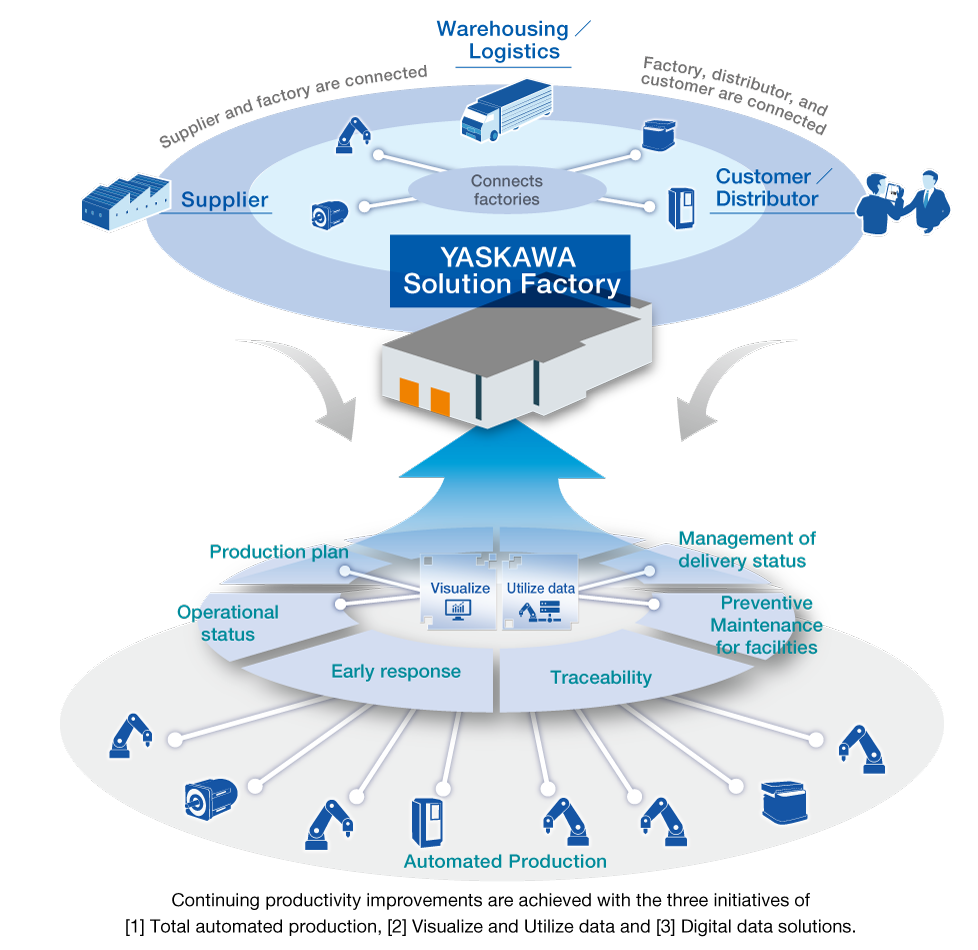
Image of Yaskawa Solution Factory systems and initiatives
 Region
Region



 Principles & vision
Principles & vision
 Procurement
Procurement
 Sustainability for the Yaskawa Group
Sustainability for the Yaskawa Group
 Customer satisfaction
Customer satisfaction
 Supply chain
Supply chain
 Social contribution
Social contribution
 Compliance & risk management
Compliance & risk management



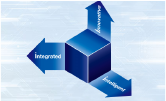
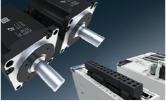
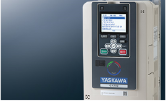
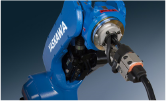
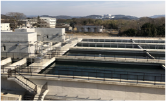
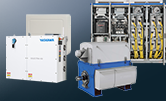
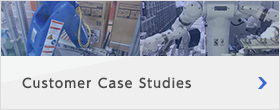
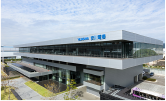







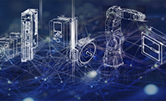
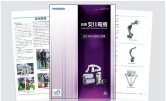
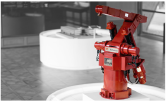




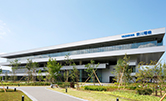








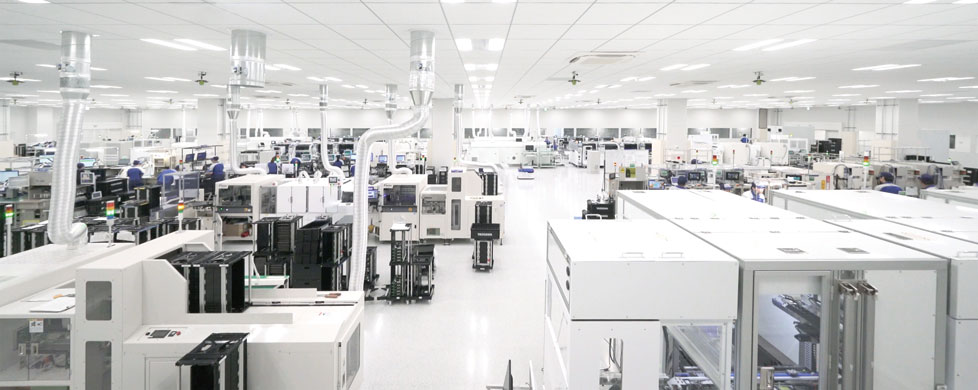
 The Σ-7 Series AC servo drives produced
The Σ-7 Series AC servo drives produced Parts are carried to the assembly processes on AGV
Parts are carried to the assembly processes on AGV
